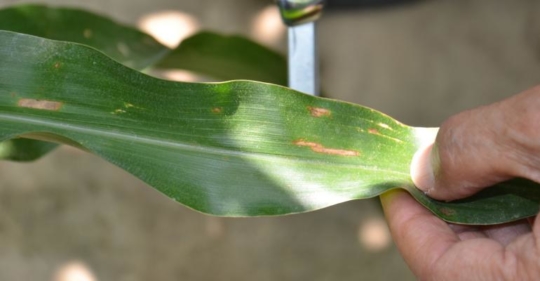Explore our blog featuring articles about farming and irrigation tips and tricks!
Why Corn Test Weight Makes A Difference

By: Dave Nanda
Despite use of foliar fungicide applications by several farmers, I’ve seen lots of disease pressure in many cornfields this year. Along with gray leaf spot, I’ve seen northern corn leaf blight.
Weather was favorable for these disease organisms, which affect yield and test weight. Disease lesions reduce the photosynthetic area of leaves, and when diplodia and gibberella organisms attack ears, kernels become chaffy. That can lower test weight.
Growers often discuss test weight, especially if it’s high. Grain moisture is important because of cost of drying, but why is test weight important? Does it just give the grower bragging rights, or does high test weight have some benefits?
Farmers can haul more bushels of high test-weight grain per trip to the elevator than low test-weight grain. Grain with a test weight lower than 56 pounds per bushel may be discounted by elevators, but no credit is given for higher test weight, even though grain with higher test weight generally is better quality.
Hybrid genetics plays an important role in test-weight determination and is usually mentioned in seed company literature. However, there is no correlation between test weight and yield potential of a hybrid. As the moisture goes down, test weight increases, since dry matter in grain weighs more than water.
Stay up to date on all T-L news and get alerts on special pricing!


